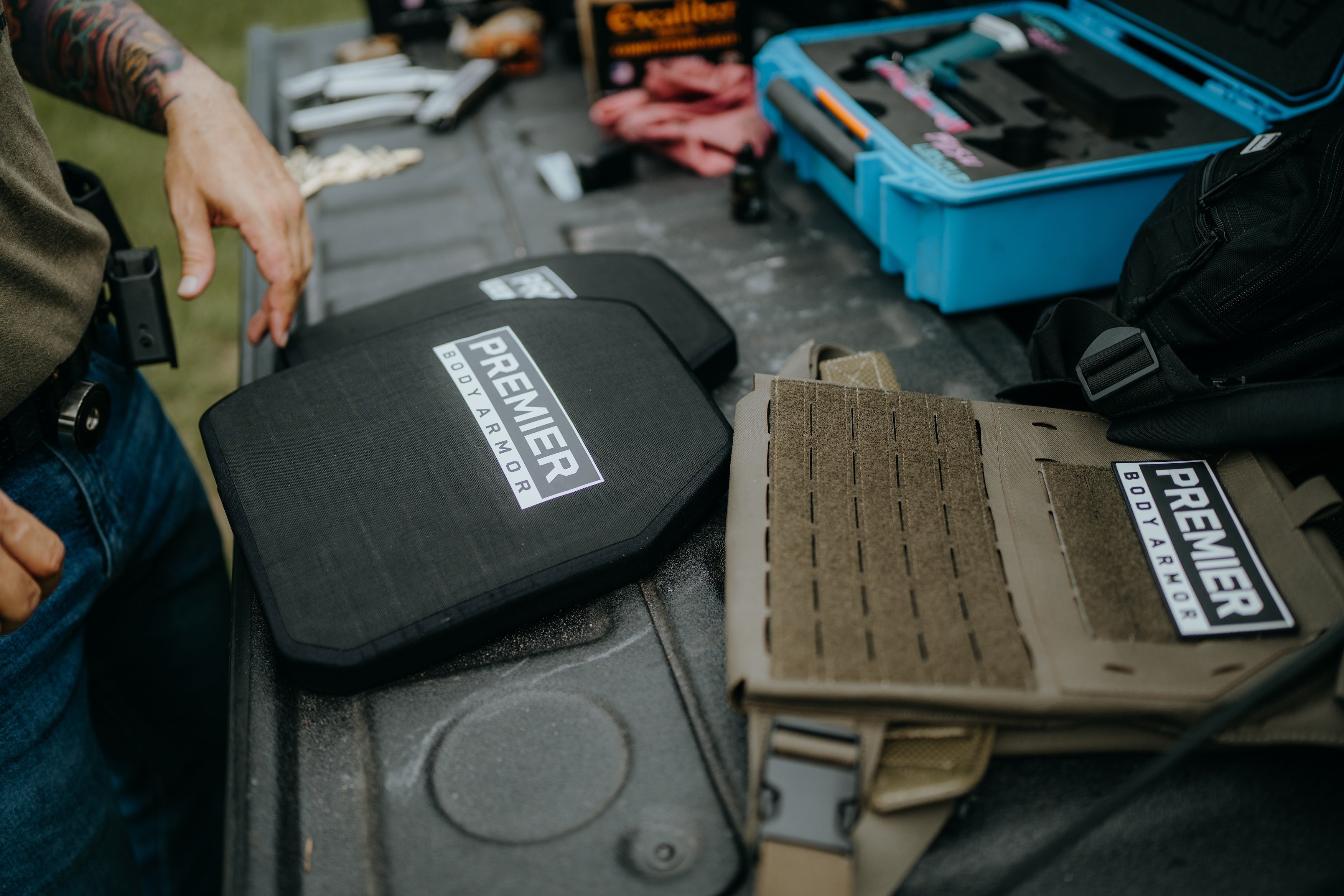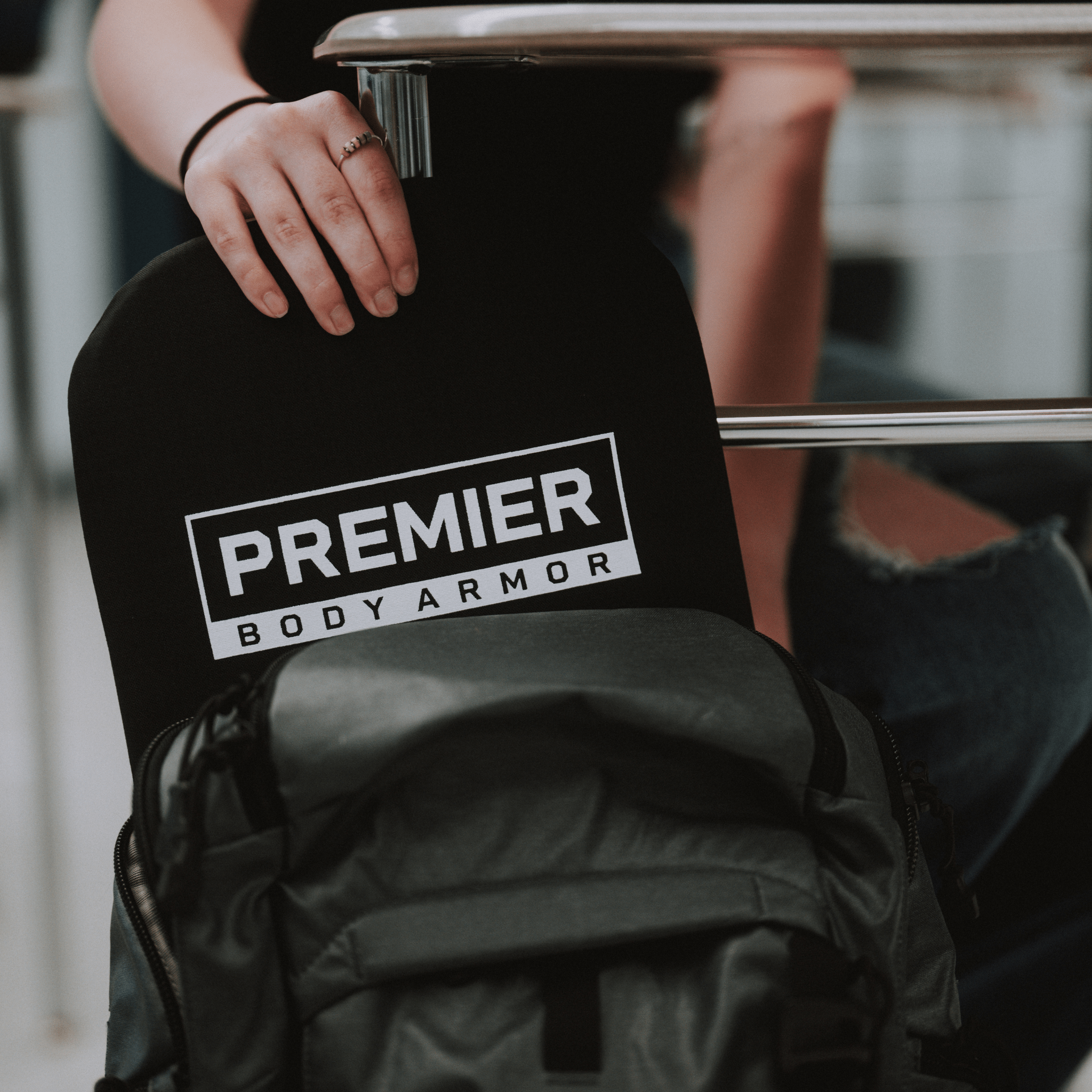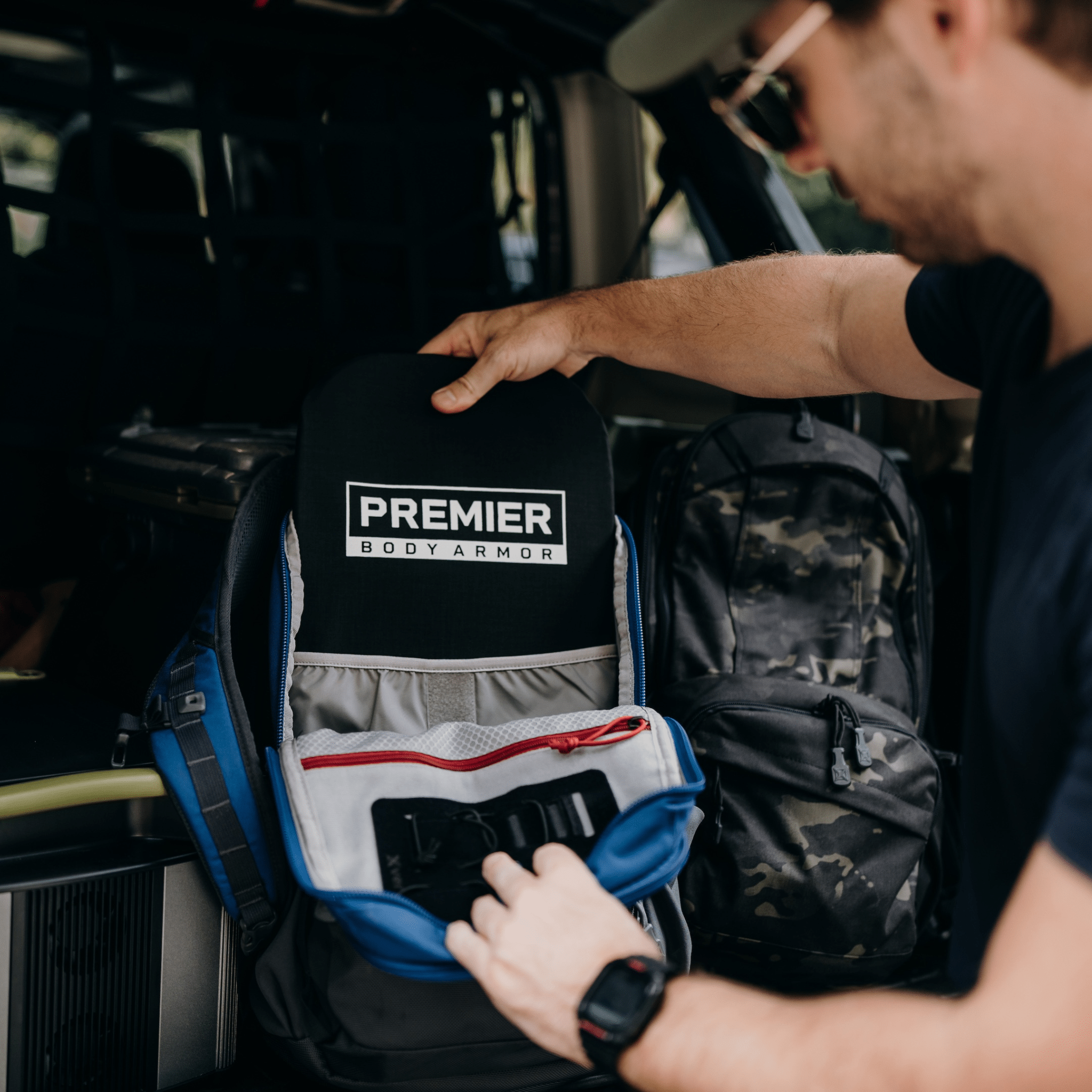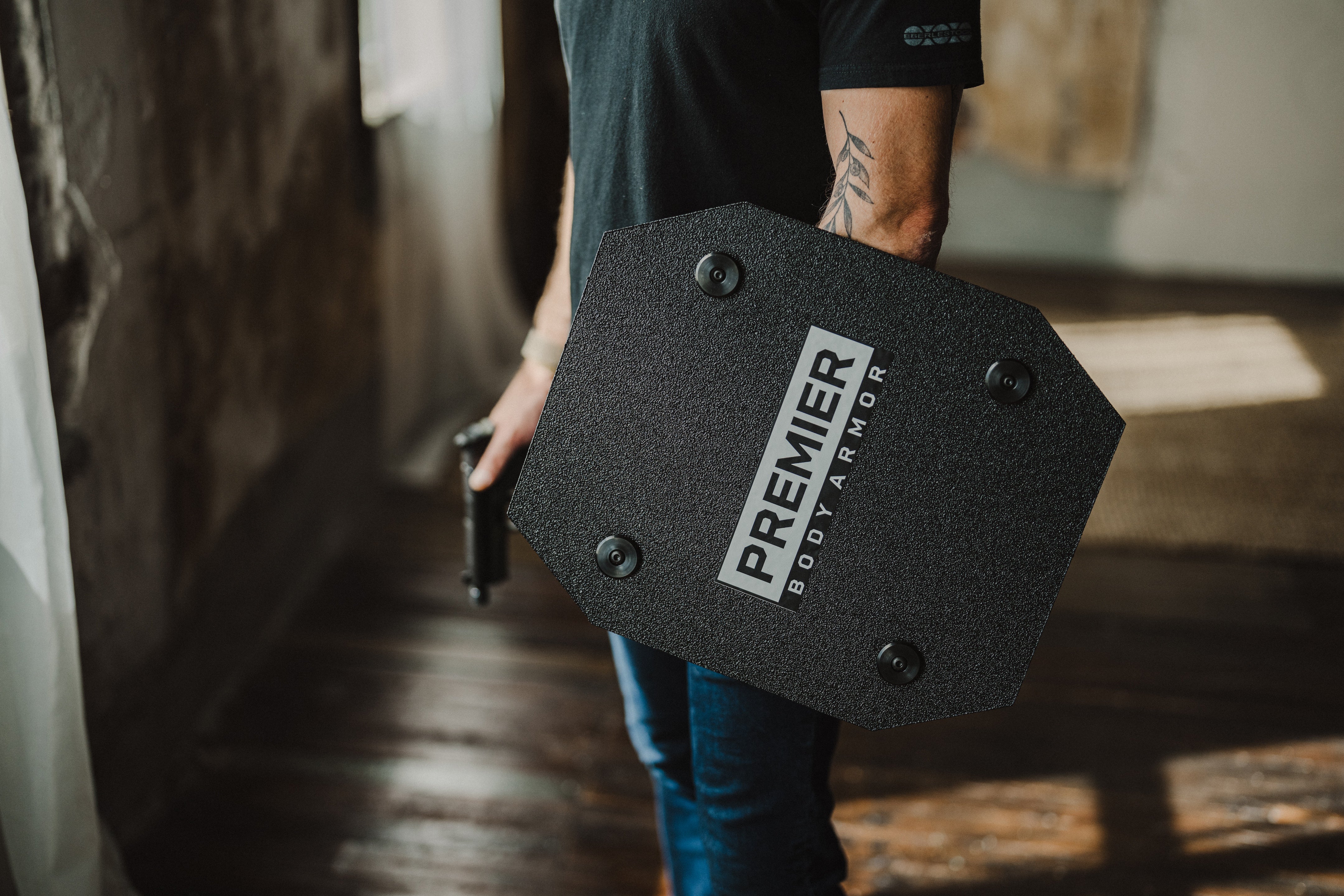Hard Body Armor vs. Soft Body Armor: Which Is Right for You?
Deciding between soft armor vs hard armor comes down to threat, mobility, and how you’ll wear it. Your choice affects comfort, concealment, and readiness.
In this guide, we compare soft vs hard armor in plain talk so you can pick the right setup for your life, not just your vest. We’ll cover materials, protection levels, weight, cost, and day-to-day use, including when a soft panel vs hard panel makes the most sense.
At-a-Glance
- Primary call: If rifle threats are in scope, run hard plates (Level III/IV or RF1/RF2/RF3). If handgun-only, run soft Level IIIA/HG2.
- Protection: Soft handles common handgun rounds/frag; hard plates are built for rifle threats.
- Concealment: Soft hides under clothing; hard is overt in a plate carrier.
- Weight & wear time: Soft is lighter/flexible for multi-hour or hot-weather wear; hard is heavier, best for short, high-risk events.
- Hybrid plan: Wear soft daily; keep a staged carrier with hard plates for surges.
Hard Armor vs. Soft Armor: What’s the Real Difference?
At a glance, the difference between soft armor vs hard armor seems simple: soft armor flexes and moves with you; hard armor is rigid and built to stop rifles. Materials drive the role, but there's more to it.
Soft armor uses high-strength fibers (e.g., aramids/UHMWPE) and excels at low-profile, discreet concealment. Hard uses ceramic, steel, or polyethelene (PE plates) for rifle threats. It’s heavier, but it offers significantly more ballistic protection.
In short, hard armor vs soft armor is a tradeoff: concealment and comfort vs rifle-rated protection. Decide by threat profile, wear time, and how you’ll use it. Do you need something lightweight and concealable for daily wear under a shirt, or are you preparing for high-threat scenarios that require rifle-rated protection in a plate carrier for overt use?
Both types have their place. Understanding your environment and exposure risk helps determine the right level of protection, without sacrificing comfort or mobility.
What Is Soft Body Armor?
Soft armor layers advanced, high-strength fibers to absorb and disperse the energy from handgun rounds or fragmentation. It’s flexible, low-profile, and easy to wear under clothes, like our Everyday Armor T-Shirt 360. Some setups allow for optional plate inserts so you can pair soft armor with plates to boost protection levels when needed.
Soft armor is a popular choice for law enforcement officers, security professionals, and civilians who want lightweight, concealable protection.
For more insight, see our guide to soft body armor pros and cons and the Everyday Armor T-Shirt collection for discreet daily use.
What Is Hard Body Armor?
Hard armor uses rigid hard armor plates (ceramic, steel, or PE) to defeat rifle threats. It’s heavier and typically worn in a plate carrier, prioritizing survivability over concealment, making them ideal for high-risk environments or tactical operations.
While heavier and more cumbersome than soft armor, hard plates provide the stopping power necessary for military personnel, SWAT teams, or civilians preparing for extreme threat scenarios.
For example, the HighCom AR1000 Guardian Level III Plate is NIJ certified and capable of withstanding multiple hits from rifle rounds, making it a reliable choice for both professional and prepared civilian use.
Quick Decision Guide: Hard vs. Soft Armor
| Decision Factor | Best Fit |
|---|---|
| Rifle threats in scope | Hard armor |
| All-day wear / heat / mobility | Soft armor |
| Concealment required | Soft armor |
| Short, high-risk calls | Hard armor |
| Minimal printing under a T-shirt | Soft armor |
| Willing to carry weight & train | Hard armor |
| “Everyday” baseline with plan for surges | Hybrid: Soft + staged plates |
Guidance only. Always verify NIJ rating, sizing, carrier compatibility, and train with your chosen setup.
Comparing Protection Levels
Understanding soft vs hard armor protection starts with NIJ levels. In simple terms, soft armor is handgun-rated; hard armor is built to withstand higher-caliber threats like rifle rounds.
The common crossroad is Level IIIA vs Level III (or HG vs RF in the new NIJ 07 body armor standards). IIIA soft armor is tested against high-energy handgun rounds (e.g., .357 SIG, .44 Magnum). Level III hard plates are tested to stop 7.62×51 NATO (M80 Ball) rifle threats, with Level IV adding AP performance.
Pick your level by likely threats and mission, not marketing.
NIJ Ratings Explained
The National Institute of Justice (NIJ) standards define ballistic levels and test methods for handgun and rifle threats. Historically, 0101.06 used levels IIA–IV; the newer 0101.07 organizes threats into handgun (HG1/HG2) and rifle (RF1/RF2/RF3) tiers. For a plain-English walkthrough, read our article comparing the 06 standard to the updated 07 standard.
You can also read more about the basics of armor in our Layperson’s Guide to Body Armor.
Ultimately, selecting the right protection level depends on your environment, risk level, and mobility needs. If you’re preparing for civilian threats, soft armor may suffice. But for tactical applications or uncertain environments, hard plates may be worth the extra weight.
Comparing Weight, Comfort, and Concealability
Weight and comfort drive real-world wear time. Compared to hard armor, soft armor is lightweight body armor you can keep on for hours; it molds to the body over time and breathes better, so soft armor comfort is higher, especially in heat. Concealability is another major factor. Soft armor fits more easily under clothing, making it a top pick for executive protection, undercover work, or civilian self-defense.
Hard body armor plates add mass and reduce mobility but deliver rifle protection. If you need to vanish under a shirt, concealable armor (soft) usually wins. If the risk includes rifles, accept the weight and run plates. For tradeoffs by role, see our guide to tactical vs. concealable body armor.
Ultimately, the right choice depends on your lifestyle and threat environment. Those in low-profile roles may benefit from soft armor’s sleek design, while high-risk professionals might accept the weight penalty for the added defense of hard plates.
Everyday Wear Versus Extended Tactical Use
For soft armor for daily use, think commutes, plainclothes work, and long hours on your feet. Options like a soft armor vest can hide well, stays comfortable, and won’t slow you down.
A tactical armor setup with plates makes sense for high-risk calls, perimeter work, or uncertain environments, but the added loadout weight hits mobility and endurance.
If you need all-day wear and discretion, run soft. If rifles are in the threat model or you’re responding to short, intense events, run plates.
Hard vs. Soft Armor: Cost and Durability Breakdown
When comparing body armor, cost and longevity play a big role in determining what’s right for your needs, and hard vs soft armor differ significantly in body armor cost, maintenance, and armor shelf life.
Soft armor tends to be more affordable upfront and is ideal for budget-conscious users looking for Level IIIA protection. However, it can have a shorter service life, around 5 years, due to the natural breakdown of materials like Kevlar when in constant, daily contact with body heat (it lasts longer if you aren't wearing it daily, or if it's in the form of a backpack insert). It’s also more vulnerable to moisture and must be stored properly to maintain effectiveness. Learn more in our guide to how much a bulletproof vest costs.
Hard armor plates, while typically more expensive (especially once you build out your full kit with plate carrier and gear), can last longer. Ceramic and steel options can maintain structural integrity for 5–10 years, depending on use and care. They’re also more resistant to rough handling, making them a better fit for harsh conditions and tactical use.
Maintenance also differs with various types of body armor. Hard armor may require occasional inspections for cracks, while soft armor should be regularly checked for fraying, contamination, or folding damage.
Choosing the Right Armor for Your Needs
The best armor for civilians balances mobility, lifestyle, and risk profile. Whether you’re securing your home, building a go-bag, or carrying daily, the ideal setup enhances, not hinders, your readiness..
If your priority is armor for home defense or everyday protection, soft armor is often the smarter choice. It’s lightweight, flexible, and discreet, making it ideal for civilians who want protection without drawing attention.
For high-risk environments or tactical response scenarios, hard armor plates offer rifle-rated protection and superior stopping power. These are better suited to full tactical kits and require training to manage the added weight and bulk effectively.
Need help deciding which route is best for you? Our guide on how to choose the best body armor breaks down threat levels, gear pairings, and situational needs.
Soft Body Armor vs. Hard Body Armor: Premier Body Armor Has a Solution for Your Needs
From discreet panels to rifle-rated plates, Premier Body Armor equips you with the best body armor for your mission. Want concealed daily wear? Start with our Everyday Armor T-Shirt 360 collection. Need rifle standoff? Look at our top rated armor plates (Level III/III+/IV options) and build out your carrier.
Use our collection of body armor guides to dial in materials, weights, and threat coverage, then train with your setup.
Bottom line: Pick armor that fits your threat, your day, and your body. If in doubt, start soft for daily wear, then add plates for higher-risk moments.
Soft Armor vs Hard Armor FAQs
Will soft armor stop rifle rounds?
No. Soft armor is handgun-rated. For rifles, you need hard plates.
Is soft armor stab-resistant?
Not by default. Stab threats are different; look for armor specifically rated for edged/blunt protection.
How often should I replace my armor?
Follow the manufacturer’s guidance and inspect regularly. Exposure, abuse, and storage all affect service life.










Leave a comment